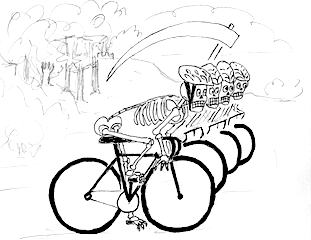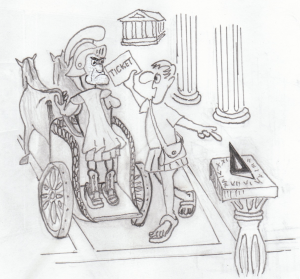Cyclists always being spindly-thin
Barrington Knubb writes:” When the bicycle was conceived in the 19th century folklore has it that its inventor was inspired by seeing the imprint of somebody’s bottom in a sandpit and declaring ‘That is the definitive shape of a bike saddle’ and taking it from there. It happened to be the bottom of the very thin person and from it evolved the ultimate ‘lean, mean machine’. From the outset the very idea that it should be the chosen mode of transport for larger people ( or ‘of comfortable appearance’ as Dickens would have had it at the time ) did not occur to anybody. Everything about the machine, the activity of cycling and its appurtenances suggests ‘thin’. The effort required to propel it for sustained periods eventually pares one to the bone and one becomes stringy and skeletal. Whether a weekend countryside cruiser or a commuting car roof-banger in the city the cyclist is exposed to constant danger which requires alertness and fast reactions : frequent adrenalin rushes make calorie-eating demands of the nervous system . Anyone used to coming up to the middle of lethal five-way junction and a sign saying ‘Bike Lane Stops here’ has already developed sharp sense of self-preservation. The figure-hugging cycling gear also shrieks ‘THIN ” , there being a limit to which lycra and spandex will stretch. ‘Streamlining’ is the name of the game ,and anything extraneous which causes drag , such as leg hair and tattoos , is often removed until one begins to look like a DNA strand on wheels. One speculates whether people become cyclists because they are thin, or are thin because they are cyclists but it seems to go with the territory.

But had the bicycle’s inventor seen the imprint of a larger bottom in that sandpit things might have been different. He would perhaps have got as far as inventing the municipal bike-stand but we would never have had anything to slot into it.
(Lola Thring, Barnet) - QQQQ*

